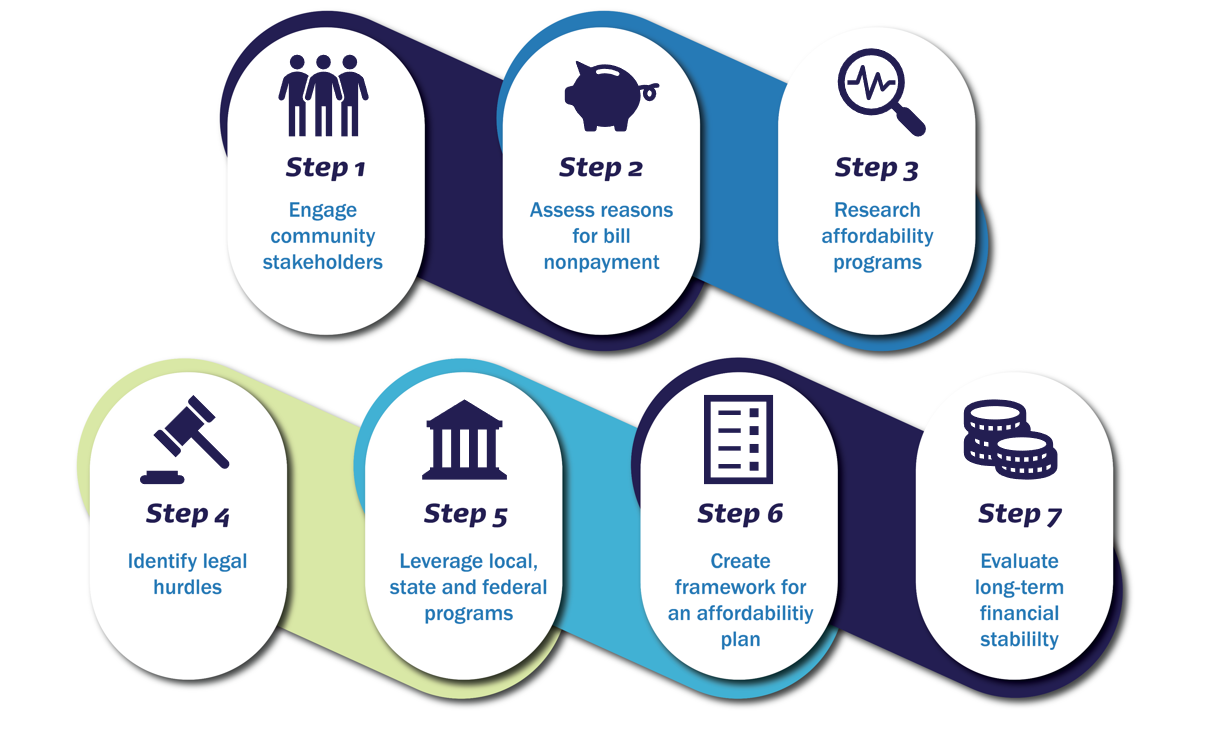In today’s economic and regulatory climate, water and sewer utilities across the U.S. are grappling with challenges around water affordability and making sure every customer has reliable, equitable access to services. The concerns are valid. In fact, a recent analysis from Duke University found that 17% of households struggle to afford basic water services.
That’s why many utilities are implementing customer assistance programs, which can evaluate what their customers need most and help address some of the affordability issues customers face.
Some water utilities may have existing programs, but they aren’t meeting the mark – especially as increases in water and sewer costs outpace inflation. In addition, it’s difficult to secure the funding needed to implement these types of programs while maintaining proper system investments.
Encouragingly, utilities like Michigan’s Oakland County blaze the trail when it comes to designing assistance programs that help meet today’s demands for equitable water access.
In May 2021, the Oakland County Water Commissioner’s Office (WRC) received an affordability and planning grant from the Michigan Department of Environment, Great Lakes, and Energy. This allowed WRC to partner with Stantec to develop a plan for meaningful assistance programs that will make water more affordable for customers without compromising water quality.
WRC approached its affordability planning following a specific framework that a group of consultants, including Stantec, developed to guide utility clients. After a comprehensive evaluation, WRC has designed pilot affordability programs in two different municipalities using a “people first” approach, which takes into account structural and systemic challenges around water affordability.
Other water utilities around the country are looking to develop similar programs, and it can be a daunting task. So how does a utility determine what its customer assistance program should look like?
A successful roadmap includes four key steps prior to getting a program off the ground.
First, a utility must assess its needs. This includes analyzing customer data, demographics, and affordability metrics to determine if an assistance program is necessary. Many utilities agree there is a need – defining the extent of the need makes a case for or against a program.
The next step is to identify objectives. There are dozens of objectives at play when it comes to designing this type of program, ranging from program costs to administration to enrollment. The most successful approach is one that identifies three to four key objectives and keeps customers in focus.
With objectives set, a utility can then move into selecting components for its affordability program, which incorporates elements like discounts, special rates, exemptions and more. This is when a utility can gather stakeholder feedback and conduct further analysis on needs and objectives. For example, WRC weighed options like an income-based model, and learned through its feedback process that people want something they can afford to pay sustainably, rather than having to turn to a special program for assistance if they’re struggling to pay their bills.
Customer education is a useful component of a program which can help people learn about practices like rate setting and how to read a bill or identifying and repairing home leaks to keep their water bills lower.
The fourth step to developing a customer assistance program is to determine design requirements. During this stage, a utility works through all the logistical elements, including how a program will be staffed, how customers can enroll, what policies need to be in place, marketing and outreach, and more.

Once these initial steps are completed, a utility can look at the next few steps to complete program implementation and evaluation, but that cannot happen without laying the groundwork. WRC used performance metrics and a tool developed by Stantec called the Customer Assistance Program Business Case Evaluation model. The tool offers a framework to compare affordability program costs and benefits not only to households receiving assistance, but also to WRC and the whole community.
Determining what the affordability threshold is for different customers in different regions and the need for assistance programs isn’t always simple, but is imperative. Smart evaluation and planning can make a major difference in the success of a customer assistance program. For this purpose, Stantec provides predictive tools that use existing data to better help a utility project its anticipated cost, the funding it needs, and monitor the success of the program.
With the overarching goal of equitable water services, sound planning and effective tracking will help WRC – and other like-minded utilities – achieve its objectives.